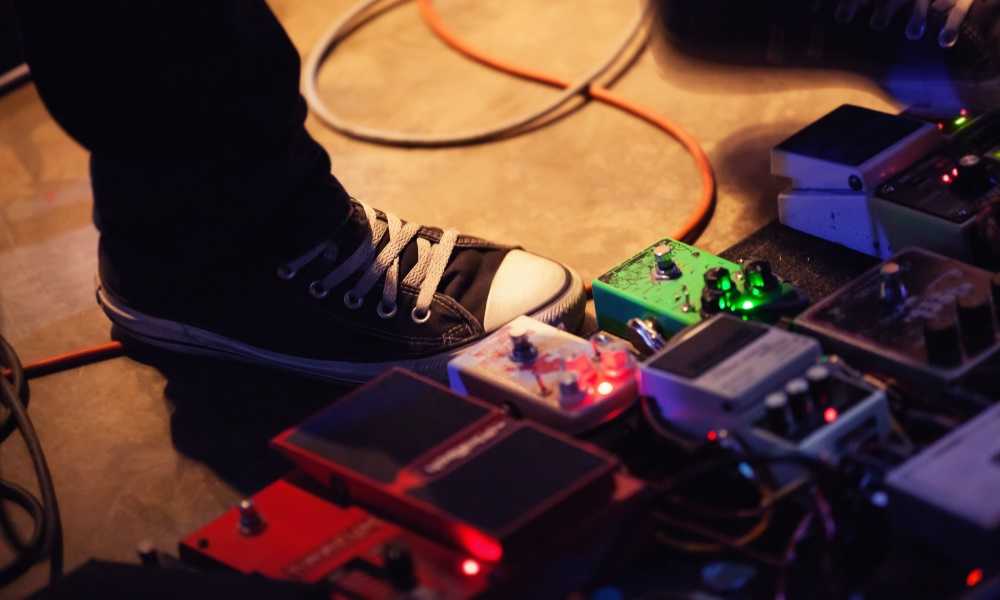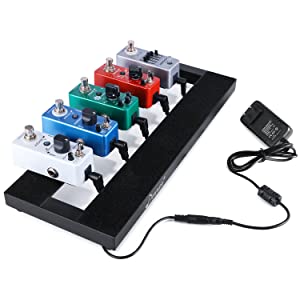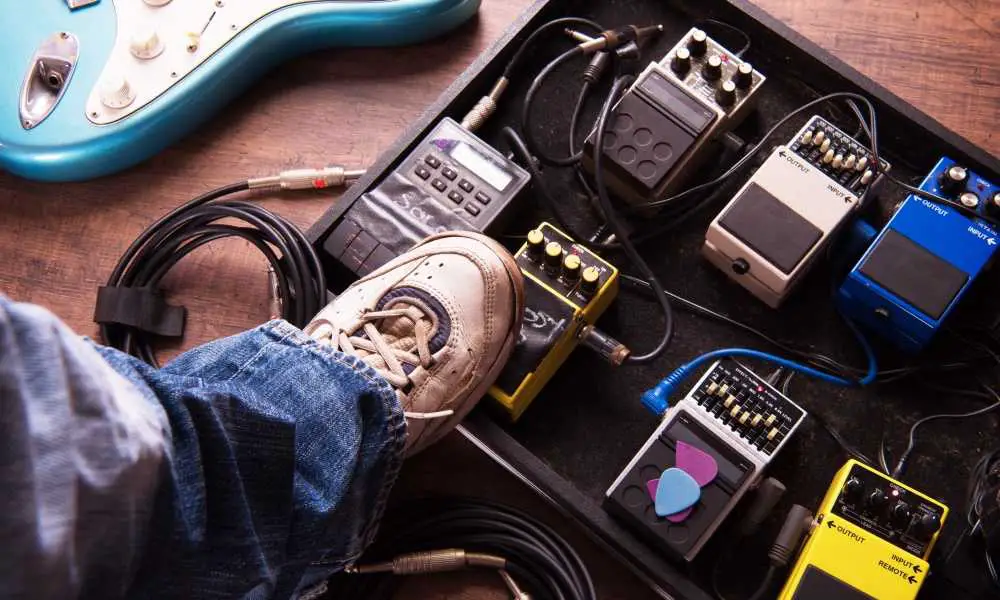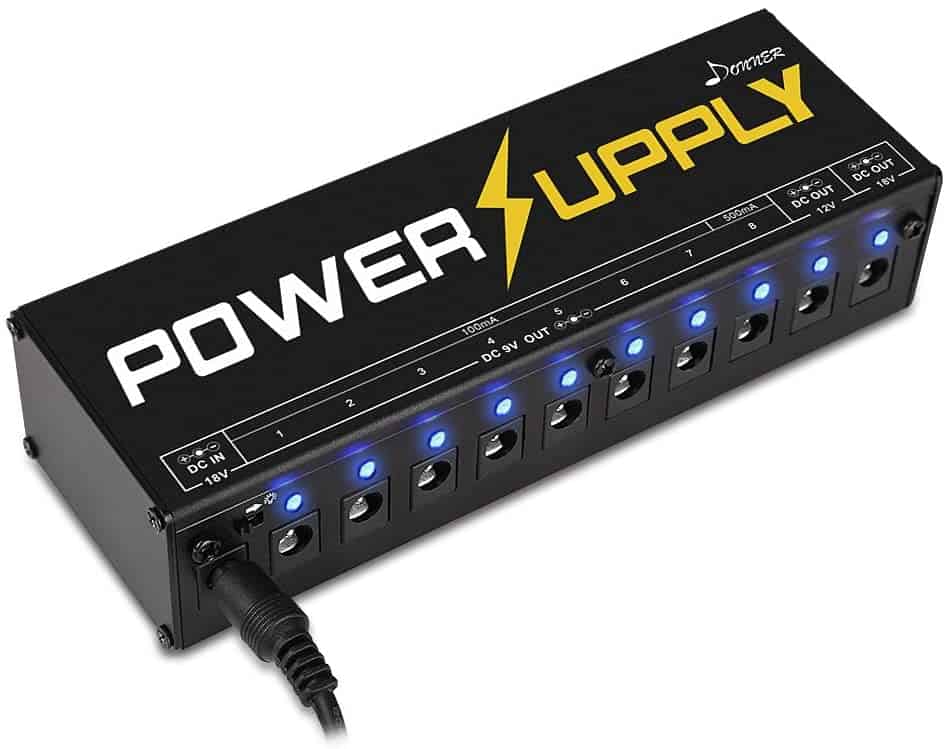In this modern age of playing guitar and making all kinds of beautiful music, guitar pedals are almost a necessity.
Of course, those who want to keep using acoustic or classical guitars forever don’t need stompboxes.
However, if you are jamming using an electric instrument, then you will develop a need for a set of pedals as time goes by.

Using different pedals at the same time requires a specific power setup, and you probably don’t know how to power multiple guitar pedals all by yourself.
Hence, read on to find out about a pretty easy method to do this.
How to Power Multiple Guitar Pedals
Famous guitar players often have a dedicated power supply for each pedal they are using during a performance.
They also don’t have to worry about setting it all up because a group of professional sound technicians takes care of it for them.
However, if you want to practice with various sound effects, or play smaller shows using them, you won’t need a dedicated power supply for each of them.
The truth is that it is sufficient to power all the pedals using a single energy source.
The Daisy Chain Method is the best way to do this, and in this article, we will explain everything there is about it.

The Daisy Chain Method
If you want to do this correctly, first, you must learn a few things about electricity.
Guitar pedals can have different voltage requirements and pin polarities inside of them, so you can’t merely connect just any different pedals together.
If you are careless and make some mistakes, the setup just won’t work. That is the best-case scenario.
The worst-case scenario is burning up your pedals with too much electricity and completely ruining them.
Setting Up the Daisy Chain
As you can see, the hardest part about connecting your pedals is finding the compatible models that can work together while still being supported by your amplifier and power supply.
Actually connecting the pedals is not that hard to do. In order to do this, you will be required to purchase a daisy chain from a local guitar shop or an online store.
I like Donner pedals quite a bit, but they have this great tech to help you with your pedalboards as well.
They have two products, the daisy chain one so you can power all of your pedals with one string of power cable:

And I’ll get into the second product down below.
There is nothing more to know about this, and each product will indicate which types of pedals it can work with.
After your daisy chain arrives, just plug it into all of your pedals. Then, connect it to a power source and the amplifier, and you’re done!
Precautions to Take
Here is a list of some things to look out for before deciding to chain a set of pedals.
They are all related to safety and electricity usage, so don’t skip these steps as they will save you a lot of time and make you avoid trouble down the road.

Voltage
Various guitar pedals require different voltage levels to work correctly.
You won’t have much trouble with this part of the process, as almost all new guitar pedals, especially newer models, all require nine-volt batteries.
Some models can accept power sources of different strengths, such as 12-volt or 18-volt batteries, but they are usually used when playing large shows.
This is important for those who might own some vintage pedals too, which can only work with a voltage level other than nine.
In this case, you won’t be able to chain that pedal to your other ones, as they must all be within the same voltage requirement zone.
Positive and Negative Pins
Each guitar pedal has two energy modes: positive and negative. They are often referred to as negative or positive center pins.
Most models will require a negative center pin, but some weird or outdated models work only on positive.
This goes for amplifiers and power supplies too.
It’s crucial not to connect multiple pedals that have different positive/negative requirements using the Daisy Chain Method, as it can completely ruin your setup and cause damage to your stompboxes.
Power Supply Compatibility
Each pedal in a chain will draw a certain amount of electricity. Hence, crucial to have a power supply that is strong enough to support the whole setup.
Otherwise, the vast requirements will burn out your power supply and completely ruin it.
Additionally, if the voltage of the power supply is too low, then the pedals won’t work at all. The more dangerous situation is the voltage being too high, as this may cause a complete burn out of your stompboxes and even a small fire.
If you have a lot of different power requirements, say for solo pedals and then a big multi-effects unit alongside it, you might need to get a more innovative option.
The Donner Power supply has a lot of inputs and of separate voltages for you to hook up different pedals to so you’ll always have the right voltage:

You can easily add this to your pedalboard as well and start powering all of your pedals.
Final Words
Many guitar players don’t know how to power multiple guitar pedals, but the truth is, this is not a hard thing to do. Once you understand the electricity requirements and take the necessary precautions, then you can rest assured that you can do this all by yourself.
We recommend always buying a fresh assortment of matching pedals that are already guaranteed to connect to each other. You will also need a matching power source. If you don’t want to worry about power and voltages, you can always find sets like these being sold together.
Also read: these guitar pedals are the best in their class, read our review
I'm Joost Nusselder, the founder of Neaera and a content marketer, dad, and love trying out new equipment with guitar at the heart of my passion, and together with my team, I've been creating in-depth blog articles since 2020 to help loyal readers with recording and guitar tips.

